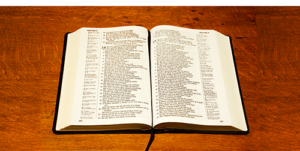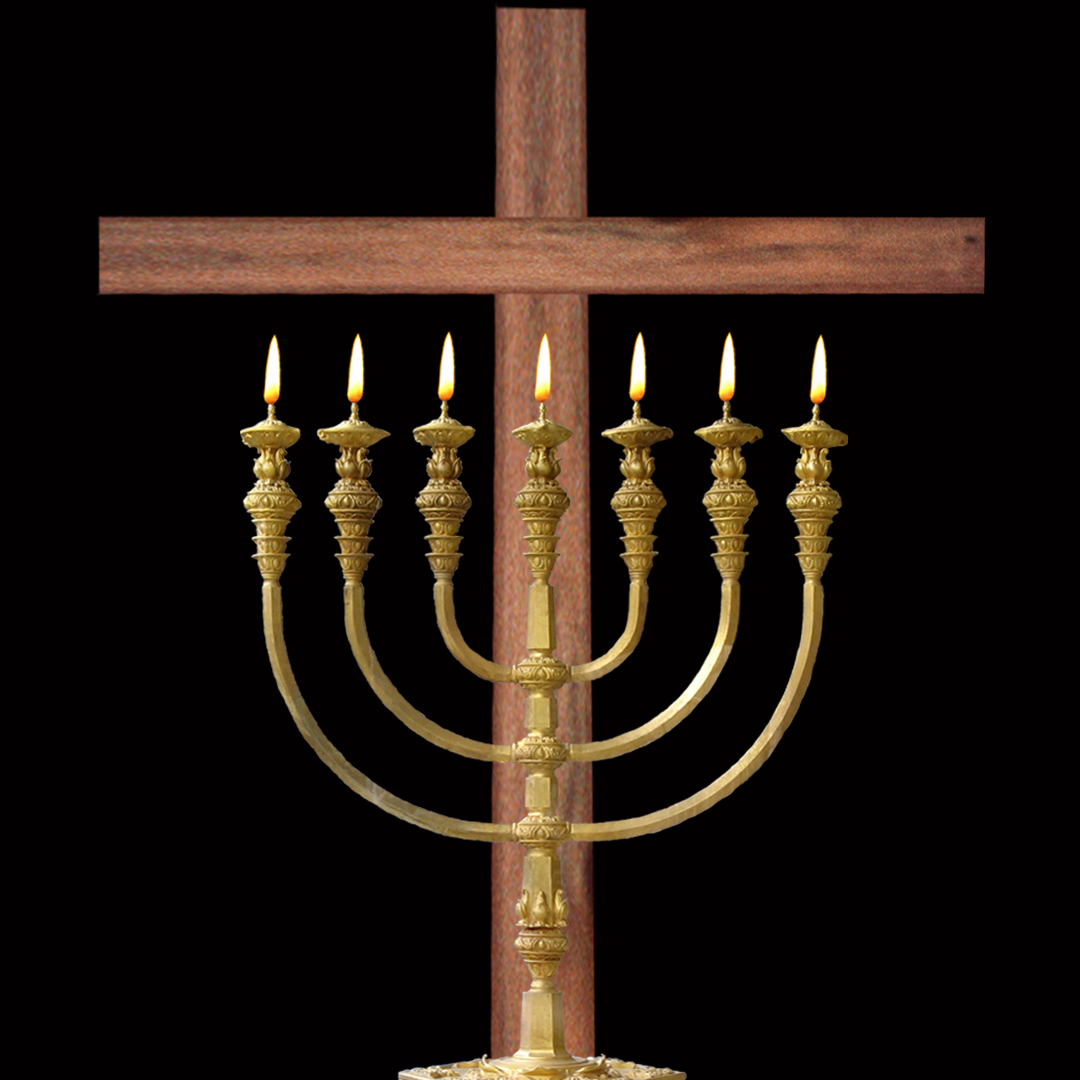Dr. McKellar’s Lesson for October 9, 2016
“Resources for Reality” 1 Peter 3:13-22 Bible Study 10/09/16
Our text this morning focuses on the reality of suffering for believers. Specifically, it focuses on suffering that comes as a result of our commitment to and identification with Christ. In contrast to those who dismiss or deny outright the concept of a believer’s suffering, these verses treat it as something to both expect and embrace. Let the truths of Christ’s substitutionary death and triumphant resurrection motivate you to magnify His worth in your own suffering.
I. Catch the context
-between two “calls” to suffer
-3:13-17: Don’t fear and Do honor Christ…
II. Ponder the suffering of Christ (18)
-mindset of Christianity
-comfort or conquest?
III. Savor the sufficiency of Christ (18)
-died for sins
-died for unjust
-died once for all time
-died to bring us to God
IV. Reflect on the days of Noah (19-20)
-in the spirit
-proclamation to spirits now in prison
-encouragement and assurance
V. Consider the correspondence of baptism (21)
-flood and baptism
-not baptismal remission of sins
-appeal to God
VI. Rest in the reign of Christ (22)
-ascended and enthroned
-all subjected to Him
VII. So What?
-“He is no fool who gives what he cannot keep to gain what he cannot lose.” (J. Elliot)
-“No wound? No scar? Yet as the Master shall the servant be, And pierced are the feet that follow Me. But thine are whole. Can he have followed far Who hast no wound or scar?” (A. Carmichael)
Dr. McKellar’s Lesson for October 2, 2016
“Identity Confirmation” 1 Peter 3:1-12 Bible Study 10/02/16
Our text this morning should be connected carefully to all that precedes it in 1 Peter. Chapter 1 emphasizes the believer’s hope and the necessity of holiness. Chapter 2 begins with a stirring reminder of the identity of believers as God’s temple and God’s people. The rest of the chapter addresses citizens and servants and their identity as citizens of heaven and servants of Christ. With chapter 3, two more distinct groups are addressed: wives and husbands. Finally, 1 Peter 3:8-12 makes an all-inclusive appeal for believers to live out their identity as God’s people. When God’s people apply their identity in their temporal relationships, the gospel is magnified and God is glorified.
I. Wives: Hope in God (1-6)
-Reverence for God motivates submission. (1-2)
-Inward character counts more than external cosmetics. (3-5)
-Confident expectation enables courageous compliance. (6)
-Consider the “window” of your marriage.
-What’s it like to be married to me?
-Confirm the location of your hope.
-When wives, and all believers, hope in God, they value what He values and fulfill His designed function for them.
II. Husbands: Practice Holy Husbandry (7)
-Exercise active sensitivity.
-Assign specific honor.
-Accentuate uninterrupted fellowship.
-Is my wife more like Jesus because she is married to me?
-Believing husbands are called to a holy husbandry that nurtures and cherishes their wives to the glory of God.
III. All Believers: Offer a Blessing Instead (8-12)
-Prioritize being a certain kind of people. (8)
-Practice a certain kind of behavior. (9)
-Pursue a certain kind of fear. (10-12) (Psa. 34:11-16)
-Enabled by the Lord’s power and motivated by fear of Him, believers can resist retaliation and respond with blessing.
-Remember who you are and whose you are.
Dr. McKellar’s Lesson for September 25, 2016
“Substitution: Heart of the Gospel” 1 Peter 2:24-25 Bible Study 09/25/16
Our text for this morning has been called an “explicit statement of the heart of the Gospel.” In it, we learn that Christ is more than simply our example in suffering. He suffered as our substitute in order to save us!
I. Pay attention to the context
-submission to government (1:13-17)
-submission as slaves (1:18-23)
-scope of suffering
-shift from affirmation to application
II. Understand the nature of Christ’s sufferings for you (24a)
-He alone
-our: beneficial for all believers
-substance: bore our sins (Isa. 53:11-12)
-sphere: in his body
-sense: on the tree as a curse
III. Ponder the purpose of Christ’s sufferings for you (24b)
-die to sin
-live to righteousness
-satisfaction, sacrifice and substitution
IV. Assess the impact of Christ’s sufferings for you (24c-25)
-healed like a diseased person
-brought home like a lost sheep
V. So What?
-Since Christ, the Shepherd, is the standard for your suffering and the substitute for your sins, follow His path of obedience in every circumstance.
-“We must be enemies to sin since Christ was a sacrifice for it.” (Charnock)
-“Nay, verily, we will sooner have our tongue cut out than cease to speak of the precious blood of Jesus Christ.” (Spurgeon)
-“My sin-O the bliss of this glorious thought!- My sin, not in part, but the whole, is nailed to the cross, and I bear it no more: Praise the Lord! Praise the Lord, O my soul!” (Spafford)
Dr. McKellar’s Lesson for September 18, 2016
“Who’s in the House?” 1 Peter 2:4-6 Bible Study 09/18/16
I. Introduction
-shift from the individual to the community
-Because Jesus Himself is the foundation and focus of God’s house, those in it should throb with
His power and praise.
II. Inclusion involves coming to Jesus continually
-constantly drawing near
-to the stone that lives
-who was rejected and elected
III. Identity flows from connection to Jesus personally
-living stones
-being built up
-spiritual house
-holy priesthood
IV. Activity focuses on valuing Jesus supremely
-choice location and controlling stone
-not put to shame: tremendous encouragement
V. So What?
-Understand that the Lord makes you who you are so that you can make known who He is.
-Grasp the options: enjoy deliverance or experience downfall
-Embrace your identity in the house of God.
-Accept the assignment of proclaiming His excellencies.
Dr. McKellar’s Lesson for September 11, 2016
“Fearful and Fearless” 1 Peter 1: 17-21 Bible Study 09/11/16
In 1 Peter, a letter to believers who faced opposition for their faith and experienced persecution, Peter began with the twin challenges of hope and holiness. In our text this morning, he added another challenge that has confused and befuddled readers in subsequent generations. This challenge centered on the concept of godly fear. Godly fear, rightly understood, is the beginning of wisdom and the safeguard of holiness. 1:17-21 offers some profound incentives for believers to live both fearfully and fearlessly. Only as you fear the Lord properly can you face your future fearlessly.
I. Relish the responsibility of fearful living
-positive treatment in Scripture (Pr. 9:10, Isa. 66:2)
-a declaration to disciples (Lk. 12:4-7)
-conduct yourselves with fear
II. Reflect on the transitory nature of your life
-throughout the time of your exile
-a brief pilgrimage
-a temporary residency
III. Recognize the total impartiality of the Lord
-a Father who is judging
-without respect of persons
-according to each one’s works
-privileged status doesn’t convey a license to sin (Dt. 10:17-19)
IV. Remember the tremendous value of your deliverance
-immeasurable worth
-precious blood
-unblemished lamb
-eternal origin: foreknown before the foundation…
-divine certification: raised and glorified
Dr. McKellar’s Lesson for September 4, 2016
“A Living Hope” 1 Peter 1:3-9 Bible Study 09/04/16
I. Introduction
-background/context for 1 Peter:
-distinction between temporary station and eternal destination
-hope: stabilization without stagnation
-Because of the resurrection of Jesus Christ from the dead, you can have a hope that never dies.
II. A Living Hope Rests in a Supernatural Power (3)
-“The resurrection is God’s ‘amen’ to Christ’s statement, ‘It is finished!’” (Johnson)
III. A Living Hope Rests in a Secure Possession (4)
-four observations about the believer’s inheritance
IV. A Living Hope Rests in a Superior Protection (5)
-the constant surveillance of omnipotence
V. A Living Hope Rests in a Sensitized Perspective (6-7)
-three observations about the believer’s trials
VI. A Living Hope Rests in an Unseen and Incomparable Person
-“Let us never live another day as if He were dead.” (Marshall)
-“…He then is all my Hope and stay…” (Mote)
Dr. McKellar’s Lesson for August 28, 2016
“From Tragedy to Triumph” 1 Samuel 30 Bible Study 08/28/16
This morning we turn our attention to 1 Samuel 30. One might say that this chapter “drips with drama.” David and his men have just escaped the trap of having to fight with the Philistines against Israel (see I Samuel 29) as a result of God’s mercy and the suspicion of the Philistines. 1 Samuel 30 is a powerful story which moves from tragedy to triumph. After leading his men from Aphek to Ziklag, David encounters tragedy. However, as the chapter progresses, the reader may observe the great emphasis placed on his ultimate triumph. Such a triumph is grounded in the providence and promises of God.
I. Disaster at Ziklag (1-6a)
-raid and capture
-deep distress
II. Request for Guidance (6b-8)
-“…strengthened himself in the LORD…”
-Abiathar and the ephod
III. Division and Discovery (9-15)
-division of troops at Besor
-discovery of an Egyptian slave
IV. Victory over the Amalekites (16-17)
V. Recovery and Reunion (18-21)
VI. Appreciation at Besor and Distribution at Ziklag (22-31)
-complaint and resolution
-the “grace” approach
-wise attribution and distribution
VII. So What?
-Because God specializes in transforming tragedy into triumph, acknowledge His presence and arm yourselves with His promises.
-Affirm the biblical reality of “tribulation” in this world (John 16:33).
-Seize the privilege of access to the ultimate Priest (Heb. 4:14-16).
-Expect and anticipate the providential working of God.
-Recognize that David’s triumph points ahead to the greater triumph of Jesus Christ (Psa. 110:1).
-“Yahweh will rule, this I know, for the Amalekites tell me so. If not, why get out of bed tomorrow?” (D. R. Davis)
Dr. McKellar’s Lesson for August 21, 2016
“A Spear and A Sparing” 1 Samuel 26 Bible Study 08/21/16
This morning we turn our attention to 1 Samuel 26 and its story of the last recorded encounter in Scripture between David, the anointed King, and Saul, the rejected King. After some introductory verses, this chapter may be viewed in three key sections. Within these sections are recorded four “speeches” of David. These “speeches” convey the theological weight of the chapter and reveal David’s increasingly informed restraint as well as the Lord’s continued reinforcement/reminder that David is indeed His chosen instrument.
I. Setting The Scene (1-5)
-the Ziphites again!
-Saul stalks
-David gathers information
II. David’s Informed Restraint (6-12a)
-David’s invitation
-the significance of a spear
-Abishai’s request
-David’s response
III. The Lord’s Protective Enablement (12b-16)
-The Lord at work!
-conversation with Abner
-the “disarming” of Saul
IV. David’s Distress And Determination (17-25)
-the “my son” treatment
-David’s distress about injustice
-valuing the ordinances of public worship
-spear return
-David’s resolute determination
V. So What?
-Because the Lord is in charge even when His ways frequently baffle you, prioritize obedience to His will and the opportunity to worship with His people.
-The best place to leave every matter is in the Lord’s hands.
-“Do the next thing.” (Carmichael/Elliot)
-Treasure the privilege of biblical community.
-Explore the issue of your ultimate hope.
Dr. McKellar’s Lesson for August 14, 2016
“Kept Back” 1 Samuel 25 Bible Study 08/14/16
This morning we turn our attention to 1 Samuel 25 and its record of David’s interaction with Abigail and her husband. While 1 Samuel 24 reveals the restraint of David in refusing to harm Saul, 1 Samuel 25 recounts the role of Abigail and her servant in restraining David from “taking matters into his own hands.” It is a story of God’s providential prevention as He restrains His servant David and reminds him of His promises. Today, like David, we may need to be restrained and reminded.
I. A Purposeful Introduction (1-3)
-death of Samuel
-Nabal
-Abigail
II. Conflict: Nabal Lives Up To His Name (4-17)
-David’s request (4-9)
-Nabal’s rejection (10-11)
-David’s response (12-13)
-Servant’s testimony (14-17)
III. Intervention: Abigail Speaks With Wisdom (18-35)
-her preparations (18-19)
-David’s perspective: vengeance (20-22)
-Abigail’s plea (23-31)
-David’s perspective: restraint (32-35)
IV. Resolution: The LORD’S Coordination (36-42)
-Nabal parties (36)
-Abigail informs (37)
-Nabal’s demise (38)
-David’s gratitude (39-42)
-The LORD’S “surplus”: restraint and reinforcement
V. So What?
-Because the LORD superintends your steps and sustains you with His promises, worship Him as the One who “keeps you back.”
-“What loving hands construct the roadblocks to our foolishness! What mercy sends frustration to our purposes! What kindness puts hindrances in our path!” (Davis)
-Grasp the Kingdom connection and the absolutely unique role of Jesus (Heb. 12:3)
-“There’s a wideness in God’s mercy, like the wideness of the sea; There’s a kindness in His justice, Which is more than liberty.” (F. Faber, 1854)
-“God moves in a mysterious way, His wonders to perform; He plants His footsteps in the sea and rides upon the storm. Deep in unfathomable mines of never failing skill, He treasures up His bright designs and works His sovereign will. Ye fearful saints, fresh courage take; the clouds ye so much dread are big with mercy and shall break in blessings on your head.” (W. Cowper, 1774)
Dr. McKellar’s Lesson for August 7, 2016
Guest Speaker: Dr. Madison Grace
The Antithesis of a Leader
1 Samuel 22:6-17
There are many places in the narratives concerning Saul that we can see his lack of wisdom. The passage today especially highlights Saul’s leadership principles and presents to us the antithesis of what a leader should look like.
1. Use of Intimidation (vv. 6-8)
2. Use of Questionable Characters (9-10)
3. Use of Emotion over Fact (11-15)
4. Use of Intolerant Retribution (16)


